Title: “Ravan Vadh” – A Climactic Resolution of Dharma in Rounak Rai’s Ramayana Series
In the epic tapestry of the Ramayana, the “Ravan Vadh” scene stands as the culmination of divine justice — the decisive end of adharma at the hands of Maryada Purushottam, Lord Ram. In artist Rounak Rai’s figurative painting titled “Ravan Vadh”, this moment is reimagined with bold iconography, emotional tension, and layered symbolism that reflect not only the climax of the story but also its philosophical and spiritual weight.
—
Visual Narrative: A Confrontation of Cosmic Forces
At the heart of the composition is Rama, dark-skinned, focused, and in perfect warrior form, pulling his bowstring with divine resolve. Opposite him looms Ravan, the ten-headed king of Lanka, depicted in a fierce yet rigid posture — a giant shadow of pride and power, moments before his downfall.
Rai has rendered Ravan’s multiple heads not merely as anatomical features but as symbols of ego, desire, knowledge misused, and arrogance. His eyes are wide with resistance, but one can almost sense the inevitability of his defeat in the posture — a man facing his karma.
Behind Ram, figures of Lakshman, Hanuman, Vibhishan, and Sita emerge — all essential to the narrative. Sita is shown in a protective, hopeful gesture, while Hanuman watches with reverence, reinforcing the idea that Ram’s act is not personal revenge, but a restoration of cosmic order.
—
Background and Textual Layers
Rounak Rai merges visual and textual storytelling by filling the background with Devanagari script, including the words “राम राम राम…” repeated as a chant — signifying the divine resonance and spiritual purity of Ram’s actions. Interspersed within this visual mantra are narrations in Hindi summarizing the context — Ravan’s fall, Lanka’s liberation, and Ram’s return to Ayodhya.
This dual layering technique reinforces the oral tradition of Ramkatha — where stories were passed down through recitation and performance. The background becomes a sacred echo, a meditative space that frames the final battle as more than just war — it is an act of liberation.
—
Style & Symbolism
True to Rounak Rai’s visual language, the painting uses:
Flat colors and bold outlines in a manner reminiscent of folk traditions like Madhubani or Pattachitra.
Stylized figures, angular and distorted, yet emotionally charged.
Repetitive motifs like multiple eyes, hands, and heads to suggest metaphysical layers rather than realism.
The dominant use of red and black conveys both violence and cosmic intensity, while Ram’s posture in blue — the traditional color of divinity and detachment — reflects a warrior acting not out of vengeance but duty.
—
Moral & Philosophical Undertone
Rounak Rai’s “Ravan Vadh” is not just a scene of triumph — it is a reflection on the burden of righteous action. Ram does not rejoice; his expression remains firm and serene, showing the discipline of dharma — that justice must be done, even when it’s painful.
Ravan, though villainous, is portrayed with a certain tragic dignity, highlighting Rai’s nuanced interpretation. This is a moment of moral complexity, not simple heroism.
—
Conclusion
With “Ravan Vadh”, Rounak Rai transforms a mythic battle into a philosophical statement rendered through figurative art. It captures the inner gravity of the moment — not just a demon’s death, but the defeat of ego, illusion, and misuse of power. Through expressive forms, script-laden backgrounds, and symbolic contrasts, Rai pays homage to the Ramayana — not as mere mythology, but as eternal inner truth.


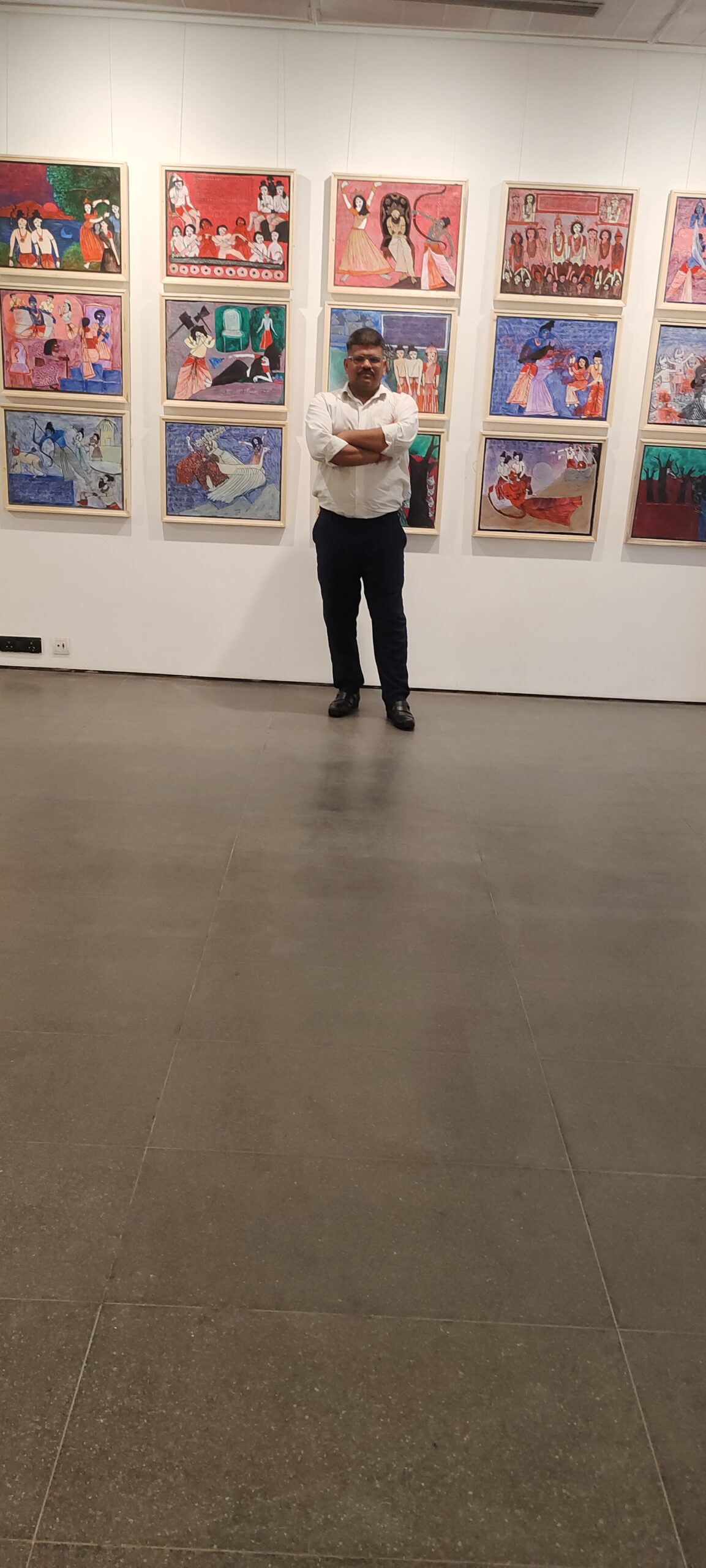
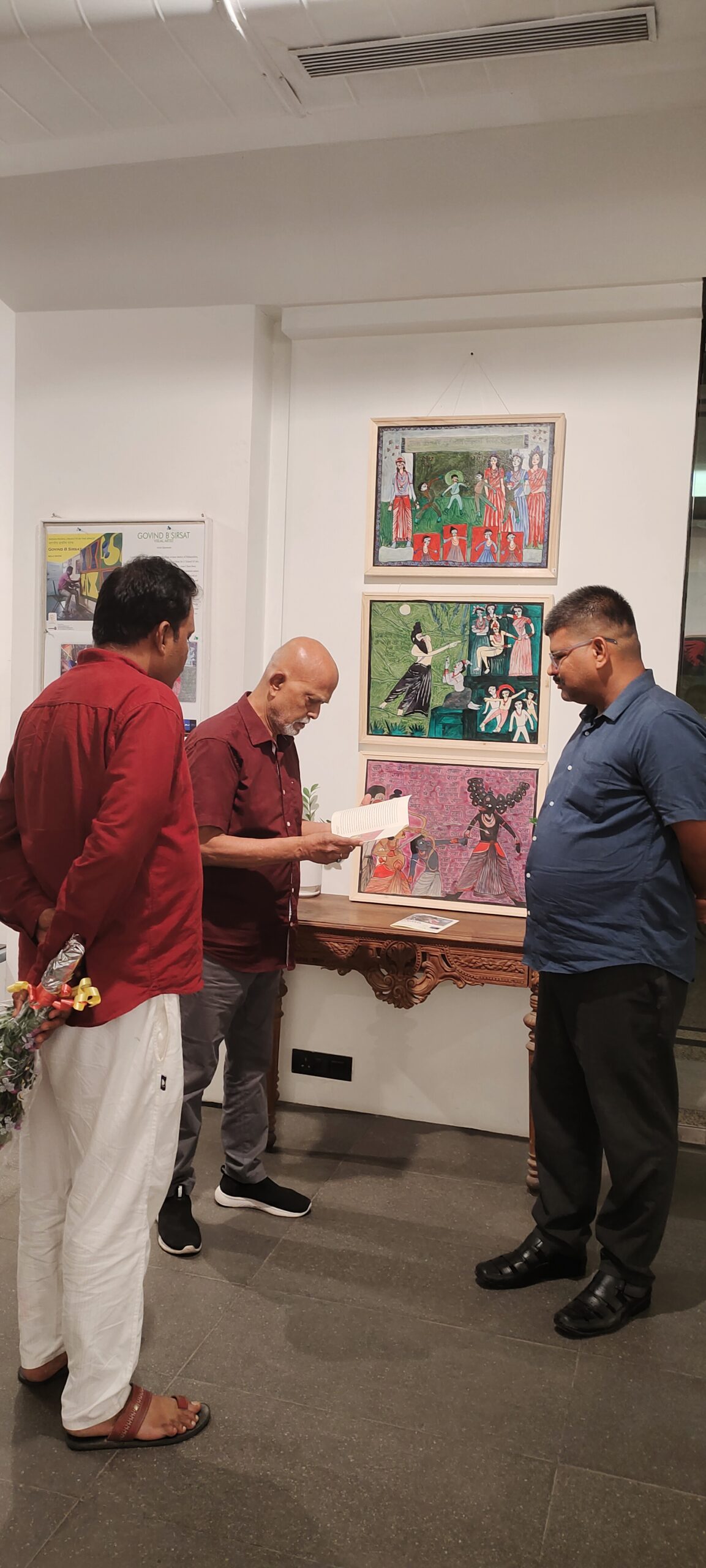
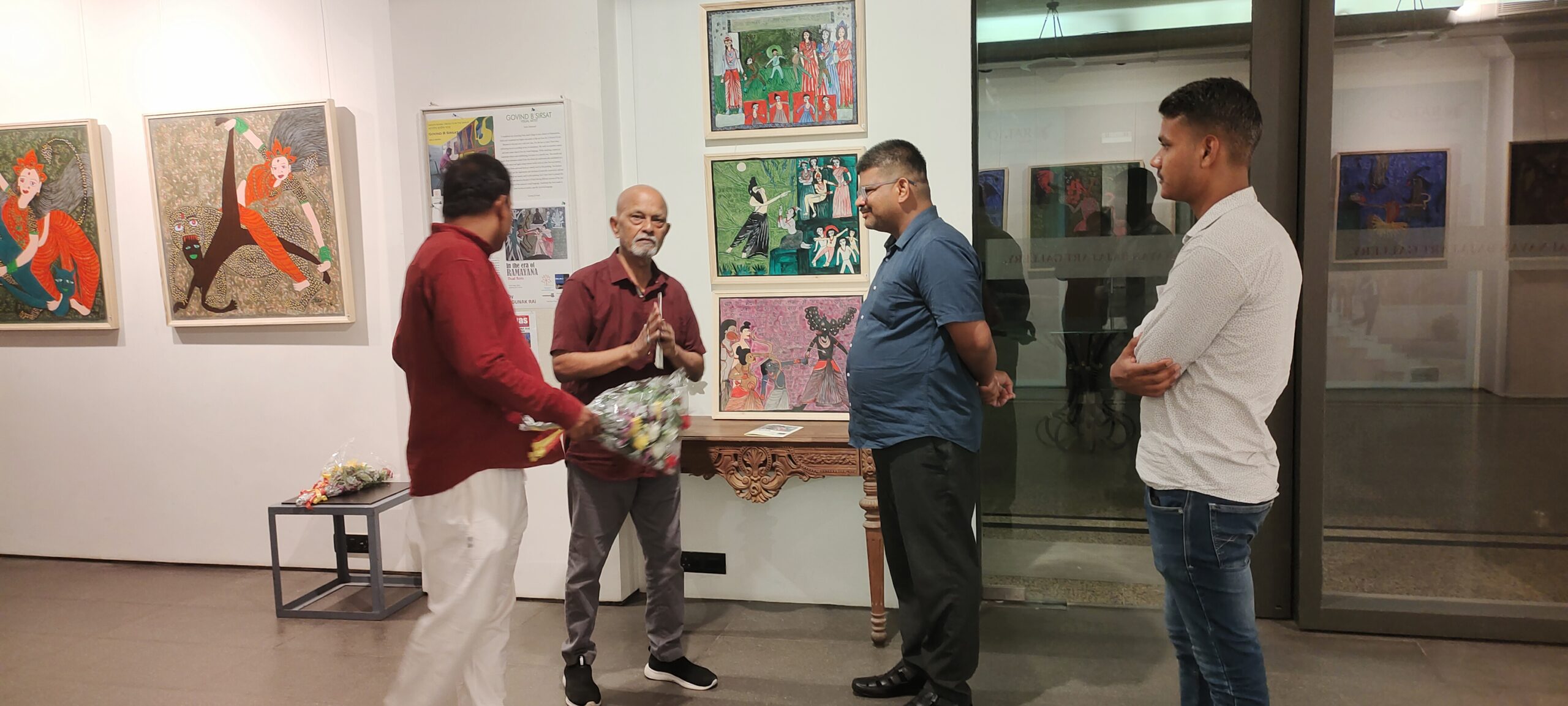
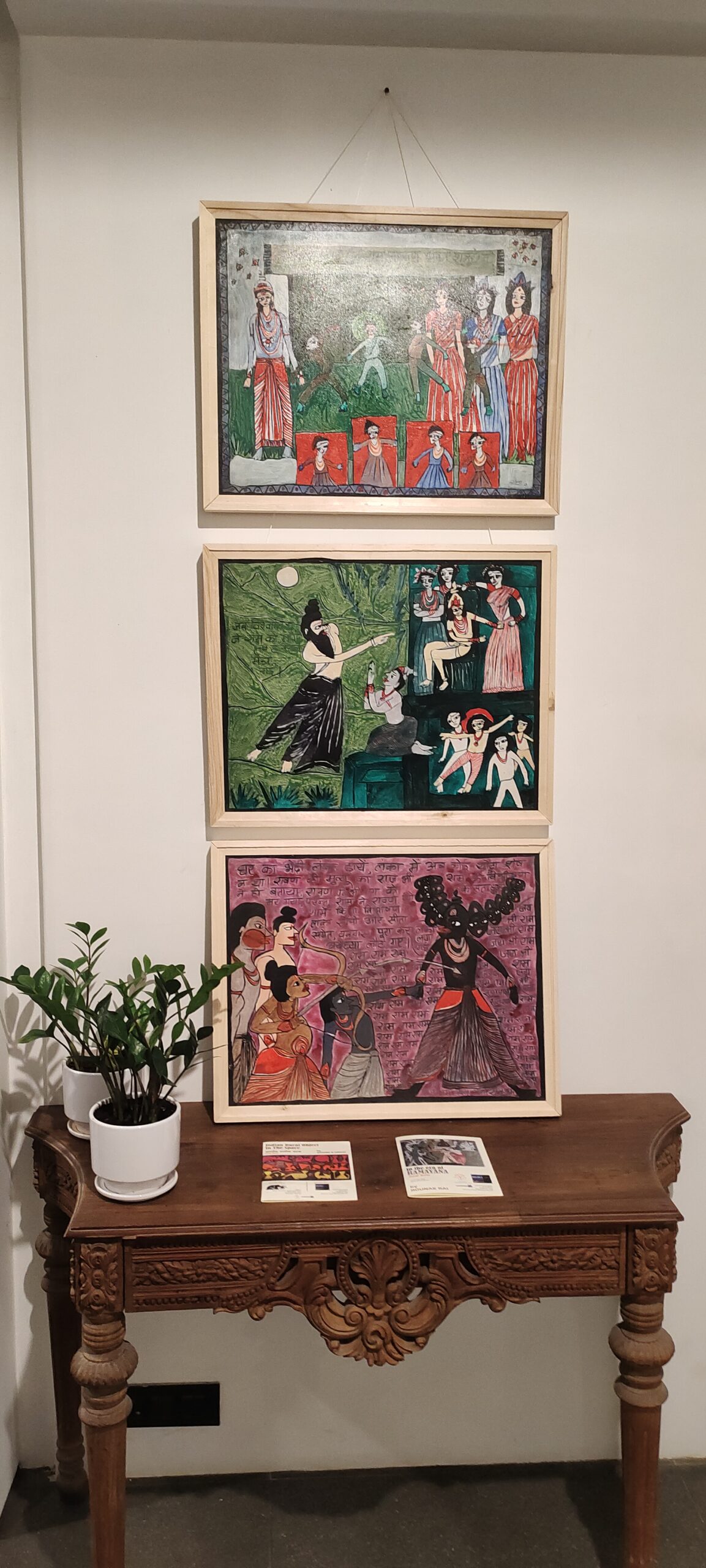
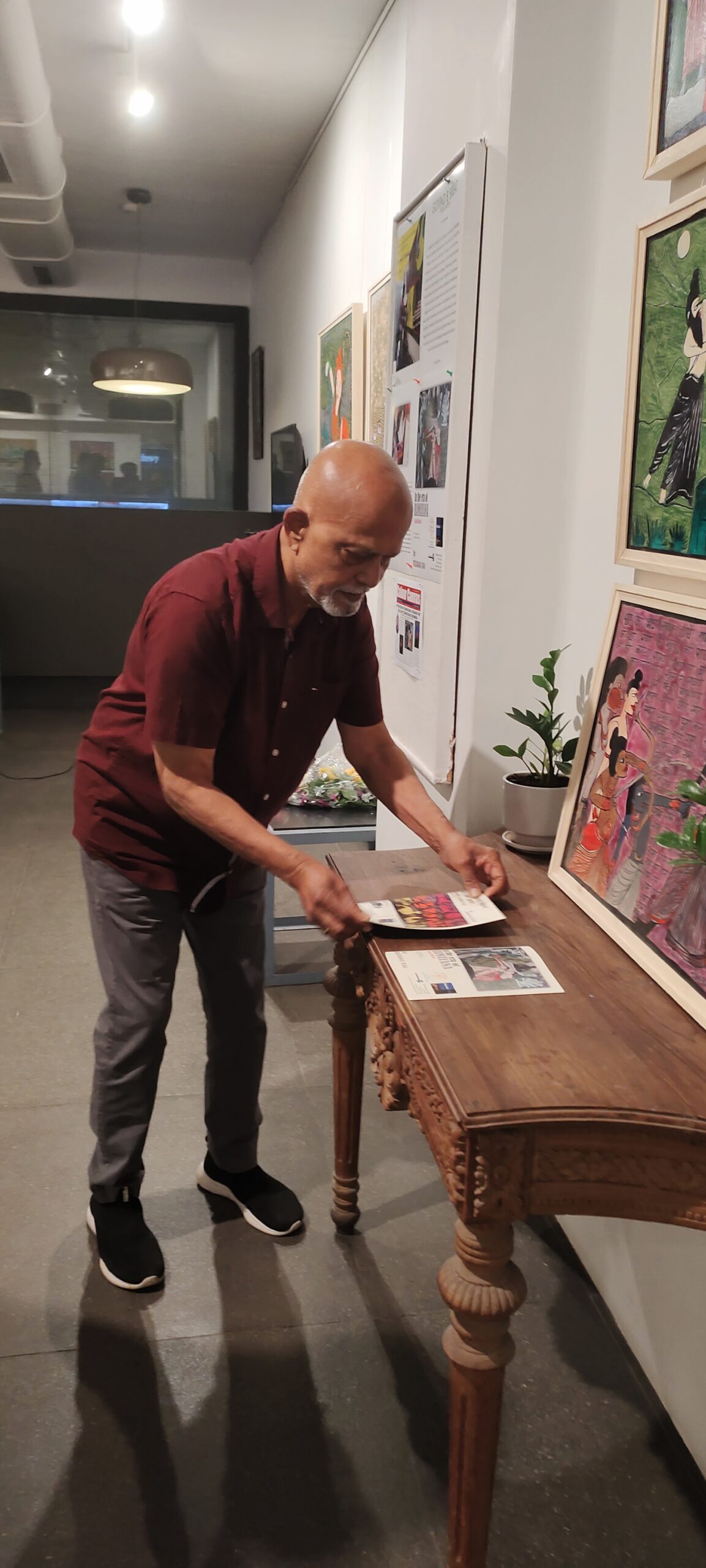
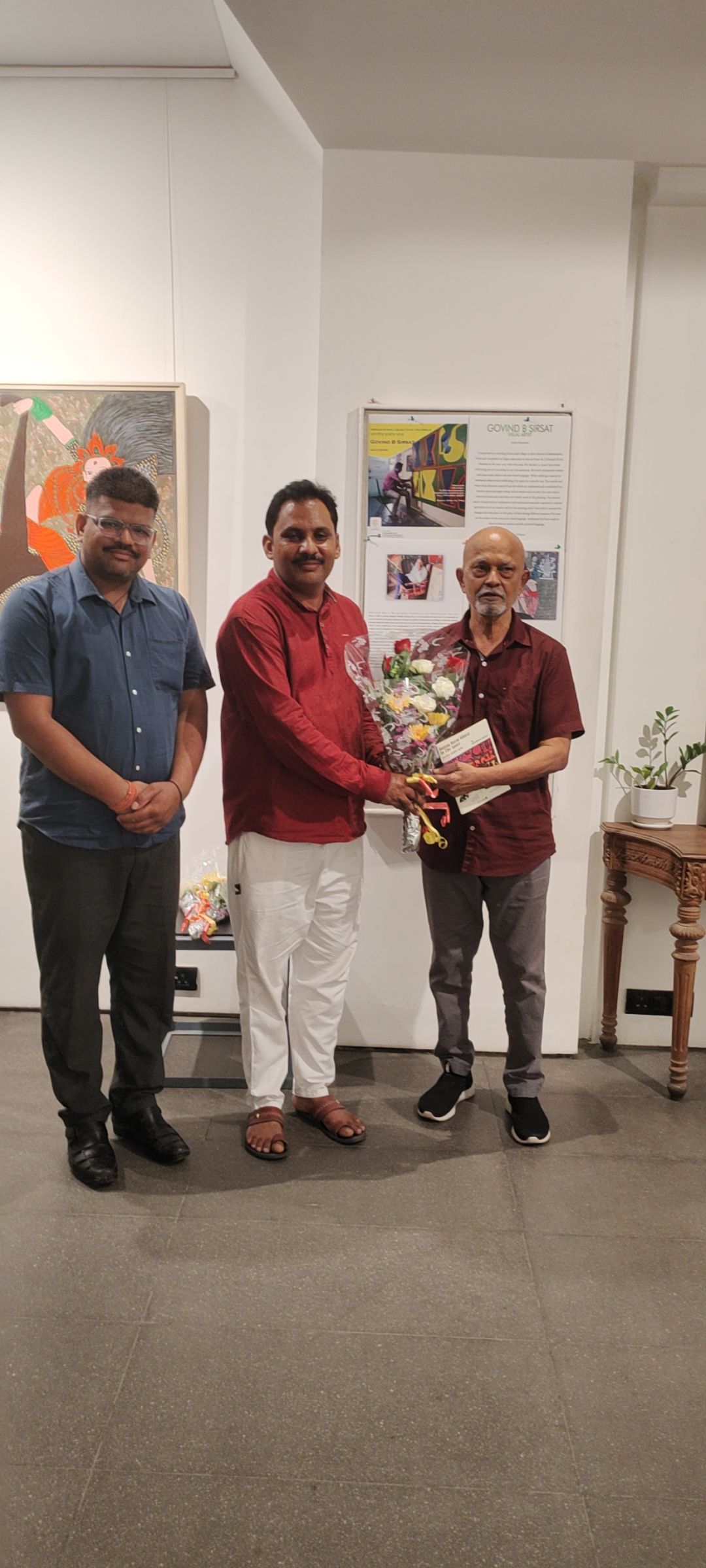
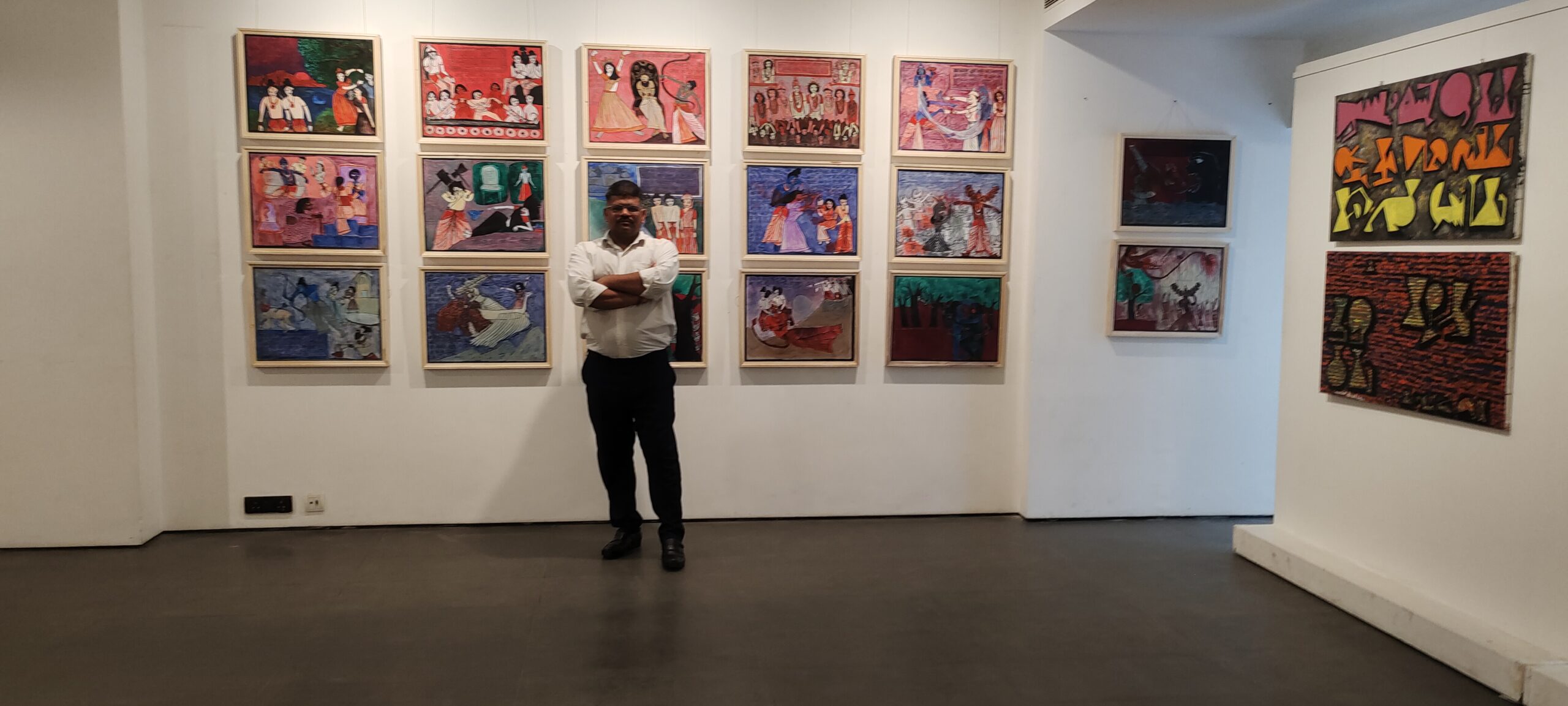
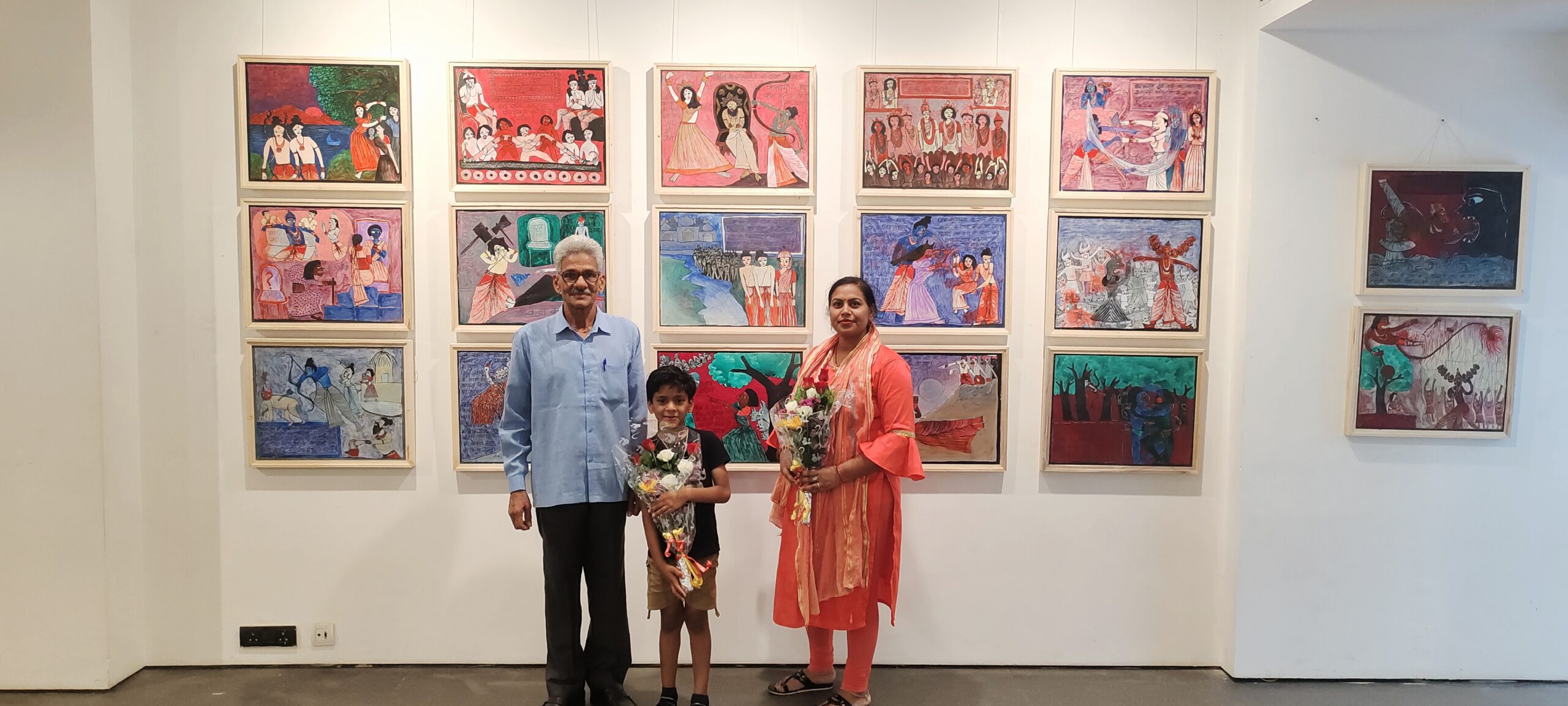
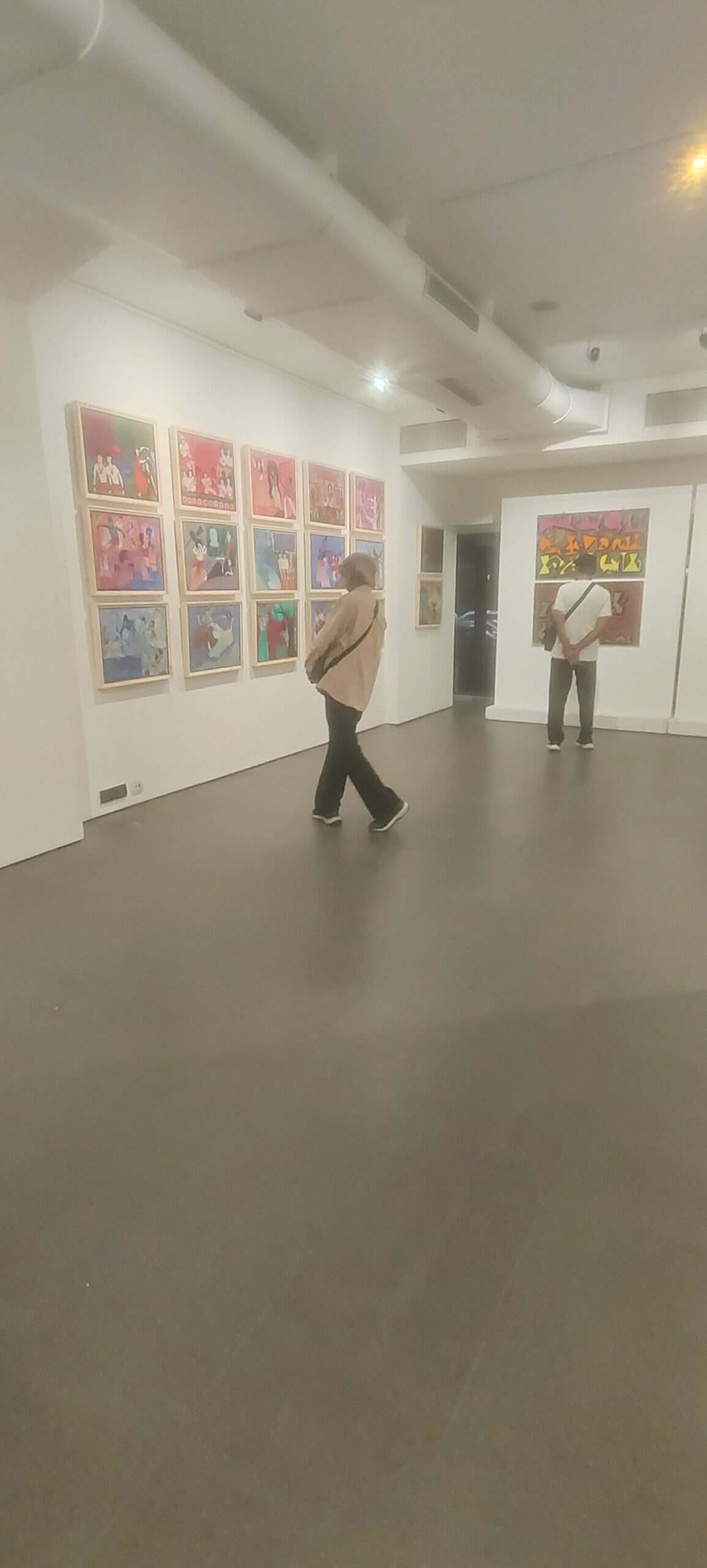
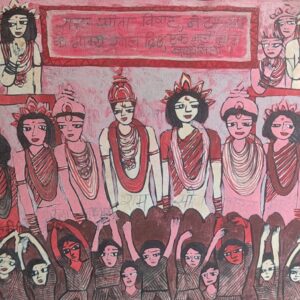
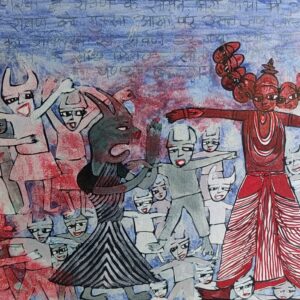
Reviews
There are no reviews yet.